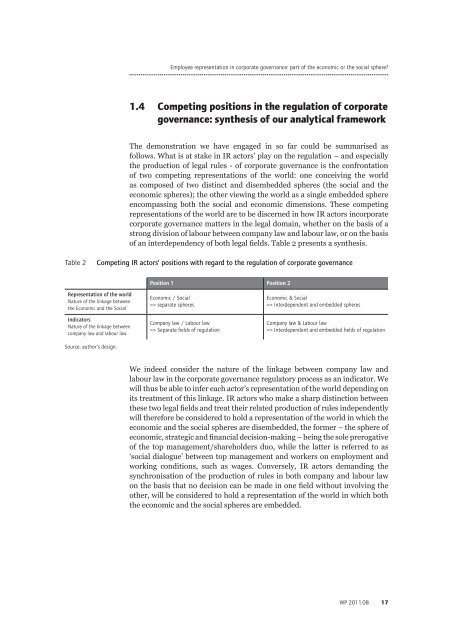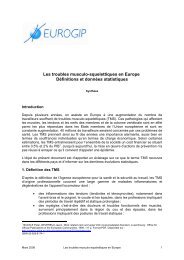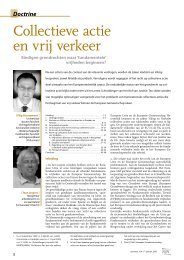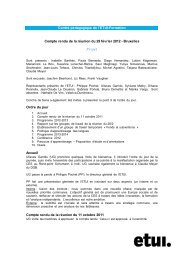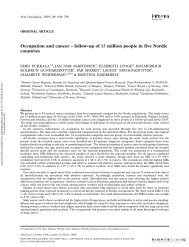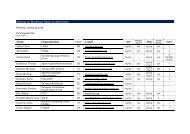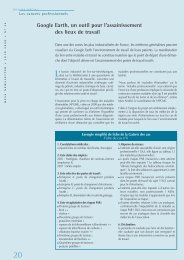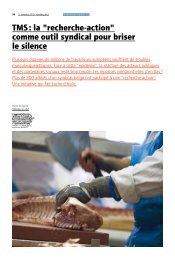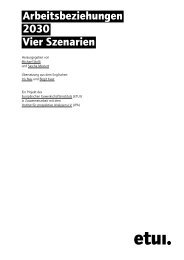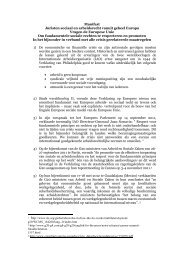Full text - European Trade Union Institute (ETUI)
Full text - European Trade Union Institute (ETUI)
Full text - European Trade Union Institute (ETUI)
Create successful ePaper yourself
Turn your PDF publications into a flip-book with our unique Google optimized e-Paper software.
Employee representation in corporate governance: part of the economic or the social sphere?<br />
1.4 Competing positions in the regulation of corporate<br />
governance: synthesis of our analytical framework<br />
The demonstration we have engaged in so far could be summarised as<br />
follows. What is at stake in IR actors’ play on the regulation – and especially<br />
the production of legal rules - of corporate governance is the confrontation<br />
of two competing representations of the world: one conceiving the world<br />
as composed of two distinct and disembedded spheres (the social and the<br />
economic spheres); the other viewing the world as a single embedded sphere<br />
encompassing both the social and economic dimensions. These competing<br />
representations of the world are to be discerned in how IR actors incorporate<br />
corporate governance matters in the legal domain, whether on the basis of a<br />
strong division of labour between company law and labour law, or on the basis<br />
of an interdependency of both legal fields. Table 2 presents a synthesis.<br />
Table 2 Competing IR actors’ positions with regard to the regulation of corporate governance<br />
Representation of the world<br />
Nature of the linkage between<br />
the Economic and the Social<br />
Indicators<br />
Nature of the linkage between<br />
company law and labour law<br />
Source: author’s design.<br />
Position 1 Position 2<br />
Economic / Social<br />
=> separate spheres<br />
Company law / Labour law<br />
=> Separate fields of regulation<br />
Economic & Social<br />
=> Interdependent and embedded spheres<br />
Company law & Labour law<br />
=> Interdependent and embedded fields of regulation<br />
We indeed consider the nature of the linkage between company law and<br />
labour law in the corporate governance regulatory process as an indicator. We<br />
will thus be able to infer each actor’s representation of the world depending on<br />
its treatment of this linkage. IR actors who make a sharp distinction between<br />
these two legal fields and treat their related production of rules independently<br />
will therefore be considered to hold a representation of the world in which the<br />
economic and the social spheres are disembedded, the former – the sphere of<br />
economic, strategic and financial decision-making – being the sole prerogative<br />
of the top management/shareholders duo, while the latter is referred to as<br />
‘social dialogue’ between top management and workers on employment and<br />
working conditions, such as wages. Conversely, IR actors demanding the<br />
synchronisation of the production of rules in both company and labour law<br />
on the basis that no decision can be made in one field without involving the<br />
other, will be considered to hold a representation of the world in which both<br />
the economic and the social spheres are embedded.<br />
WP 2011.08 17


